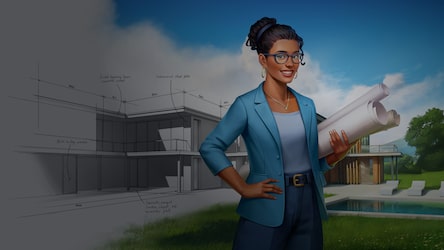Architect Advice on Maximizing Tight Urban Spaces
Wiki Article
Comprehending the Diverse Occupation Paths Available for Aspiring Architect
As a hopeful Architect, you have a world of career courses waiting on you. Each path offers one-of-a-kind difficulties and opportunities to use your creativity and technological know-how. Whether you're drawn to standard architecture or the subtleties of lasting layout, there's a particular niche that aligns with your rate of interests. Understanding these varied alternatives can form your specialist trip, yet which direction will you pick to explore initially?Typical Design: Designing Structures and buildings
Standard architecture concentrates on developing buildings and frameworks that blend functionality with aesthetic charm. As you explore this area, you'll value the elaborate equilibrium between form and function. You'll learn to attract motivation from historical styles, including elements like symmetry, materials, and workmanship. Your designs can mirror cultural heritage, showcasing neighborhood customs while fulfilling modern demands.You'll create abilities in preparing, model-making, and site analysis, permitting you to imagine and interact your ideas properly. Engaging with clients, you'll require to comprehend their vision and translate it into feasible styles.
Furthermore, developing codes and sustainability practices are essential in your job, ensuring your structures are eco pleasant and risk-free. As you expand in your occupation, you'll locate opportunities in property, commercial, or even reconstruction tasks, each offering one-of-a-kind obstacles. Accepting conventional design leads the way for a fulfilling occupation that admires the past while forming the future.
Urban Planning: Forming Neighborhoods and Public Spaces
As an aspiring Architect, you can play a vital function as an urban coordinator, transforming exactly how neighborhoods interact and work. By using neighborhood engagement techniques, you'll guarantee that homeowners have a voice fit their setting. Plus, integrating lasting layout concepts will assist create spaces that not only fulfill today's needs yet additionally safeguard the future.Duty of Urban Planners
While several might think of architects as the single visionaries behind buildings, metropolitan coordinators play a necessary function in shaping the broader landscape of areas and public areas. By collaborating with different stakeholders, you'll help create parks, transport systems, and property areas that promote social communication and ease of access. Your expertise in spatial design and neighborhood characteristics enables you to imagine future growth while preserving social heritage.Community Engagement Techniques
Reliable neighborhood interaction methods are essential for metropolitan planners to assure that the voices of locals are listened to and valued in the planning procedure. To promote meaningful discussion, you ought to focus on open forums and workshops where area participants can reveal their ideas and concerns. By actively incorporating and paying attention feedback, you'll create rooms that mirror the community's demands, inevitably leading to even more successful and sustainable urban settings.Lasting Design Concepts
When creating metropolitan rooms, including lasting layout principles is important for developing atmospheres that grow both environmentally and socially. You must start by concentrating on energy efficiency, using products that reduce waste and advertise recycling. Take into consideration integrating environment-friendly areas, like gardens and parks, to boost biodiversity and improve air high quality. Promoting walkability and public transport can decrease reliance on autos, cultivating a healthier community.Designing with water preservation in mind is additionally vital-- believe concerning rainfall gardens and absorptive surfaces to take care of stormwater. Involving area members throughout the preparation procedure warranties that the spaces you produce meet their demands and motivate social communication. By welcoming these principles, you'll contribute to dynamic, lasting city landscapes that benefit everyone.

Landscape Architecture: Creating Sustainable Exterior Atmospheres
As you explore landscape style, you'll uncover crucial layout concepts that create useful and stunning outdoor spaces. Lasting methods play a vital function in ensuring these environments flourish while lessening environmental effect. Plus, you'll discover a variety of career chances that permit you to make an actual difference in how people connect with nature.Style Concepts in Landscape
Recognizing style principles in landscape style is important for developing lasting outdoor settings that balance with nature. You'll need to contemplate components like proportion, range, and balance to ensure your layouts feel cohesive and inviting. Including native plants not only enhances biodiversity yet additionally minimizes water usage, making your landscape resilient. Believe concerning the circulation of space and how people interact with it; pathways and seating locations must invite exploration and leisure. In addition, focus on seasonal adjustments, developing with materials that complement the surroundings year-round (Architect). By prioritizing sustainability and aesthetic appeals, you can produce exterior areas that enrich the neighborhood and promote well-being. Accepting these principles will establish a solid structure for your profession in landscape design.Lasting Practices Introduction
Lasting practices in landscape design not only focus on visual appeals however also focus on eco-friendly wellness and source preservation. By incorporating indigenous plants, you improve biodiversity and minimize the demand for chemical plant foods and chemicals. Applying efficient watering systems helps save water and minimizes drainage, shielding close-by ecosystems. You can make rooms that promote dirt health, such as practicing and using organic products permaculture concepts. Furthermore, incorporating eco-friendly infrastructure, like rain gardens and permeable sidewalks, aids in stormwater administration and lowers urban heat. When you create outdoor environments with sustainability in mind, you add to a healthier world and provide spaces that foster neighborhood link. Inevitably, these techniques ensure your layouts benefit both individuals and the setting for several years ahead.Job Opportunities Expedition
With a solid structure in lasting methods, landscape architecture offers a range of career paths that allow you to make a purposeful influence on the setting. You can function as a landscape developer, creating visually pleasing and functional outdoor rooms, or focus on environmental restoration, assisting to revive broken environments. Urban coordinators usually collaborate with landscape designers to create green rooms in metropolitan settings, enhancing city livability. If you're passionate concerning education and learning, think about becoming a landscape style instructor, motivating future generations. Additionally, you might function with nonprofits concentrated on ecological sustainability or involve in research study to introduce new methods. Each course not only forms lovely environments however also fosters a healthier world for future generations.Lasting Layout: Concentrating on Eco-Friendly Practices
As you explore your occupation in design, accepting environmentally friendly methods can set you apart in an affordable field. Sustainable style focuses on creating structures that lessen ecological effect while improving occupant well-being. By check here integrating sustainable products, energy-efficient systems, and lasting building strategies, you'll add to a greener future.Beginning by gaining expertise of green accreditations like LEED or BREEAM, which can bolster your credentials. Consider how natural light, ventilation, and thermal efficiency can optimize style. Work together with designers and environmental professionals to introduce options that minimize waste and preserve sources.
Do not forget the value of community involvement-- interesting neighborhood stakeholders can influence layouts that harmonize with the setting. As clients significantly prioritize sustainability, your expertise in environmentally friendly methods will not just draw in projects however also fulfill your interest for liable design. Accept this important facet of the profession, and see your occupation flourish.
Historical Preservation: Safeguarding and Restoring Social Heritage
While you start on your building trip, consider the essential duty of historical conservation in preserving our cultural heritage. This area concentrates on the protection and restoration of substantial buildings, websites, and frameworks that tell the tales of our past. By taking part in historical conservation, you'll aid secure the building tradition that shapes area identification.As a historical conservation Architect, you'll evaluate historical relevance and analyze the condition of frameworks. You'll function carefully with conservationists and chroniclers to ensure genuine reconstruction methods are employed. This occupation path permits you to blend creative thinking with study, enabling you to create options that respect initial materials and workmanship.
Your work not just adds to sustainability by reusing get more info existing buildings but additionally promotes a sense of pride within areas. Embracing this path will help you end up being a guardian of history, protecting the stories and visual appeals that enrich our lives.
Inside Style: Enhancing Indoor Spaces
Historical conservation and interior design both share a dedication to boosting the constructed atmosphere, however they concentrate on various facets. While historic preservation emphasizes maintaining a structure's historical and social worth, interior design zeroes in on maximizing interior rooms for capability and visual appeals.As an ambitious Architect, you'll locate that indoor architecture permits you to mix creative thinking with technical skills. You'll create spaces that not just look excellent however additionally promote comfort and performance. This area entails recognizing just how light, color, and materials connect within a space, influencing state of mind and usability.
You'll service different jobs, from residential homes to industrial offices, making certain that each environment fulfills the requirements of its passengers. By prioritizing individual experience, you can change interiors into useful and inspiring spaces, making a substantial influence on just how people engage with their environments. Welcome the chance to enhance indoor atmospheres and form the method people live and function.
Industrial Design: Merging Capability With Looks
Industrial style plays a necessary function in creating items that flawlessly mix aesthetic appeals with functionality, making certain that what you make use of day-to-day is not just aesthetically enticing yet also practical. As an ambitious Architect, you could engage on your own in this area, concentrating on developing whatever from furniture to consumer electronics. Your job includes understanding customer demands, materials, and producing processes, allowing you to produce innovative remedies that enhance day-to-day experiences.In commercial style, you'll commonly team up with suppliers, marketers, and engineers, guaranteeing that your layouts are not just attractive but also practical. This job course uses a dynamic environment where creative thinking meets usefulness, making it a fulfilling selection for architects interested in forming the products of tomorrow.
Often Asked Concerns
What Educational Credentials Do I Required to End Up Being a Designer?
To come to be a designer, you'll require a specialist level in architecture, generally a Bachelor's or Master's. Furthermore, you'll need to complete a teaching fellowship and pass the Architect Registration Examination to practice legally.Are There Certification Demands for Various Architectural Career Paths?
Yes, there're qualification demands for various building courses. Architect. You'll need to pass exams, full internships, and often seek specialized training, depending upon your picked focus, like landscape architecture, city layout, or historical preservationWhat Software Program Skills Are Essential for Designers Today?

Just How Can I Gain Practical Experience While Examining Design?
You can get useful experience by interning at architectural firms, joining layout competitions, offering for neighborhood projects, or working together with classmates on real-world jobs. These possibilities improve your skills and construct important links in the industry.What Task Opportunities Exist Outdoors Conventional Architecture Firms?
You can discover different work possibilities outside conventional style firms, like city preparation, interior style, landscape style, building and construction management, real estate advancement, or even roles in sustainability consulting. Each deals special challenges and rewards.Whether you're attracted to traditional design or the nuances of sustainable style, there's a specific niche that straightens with your rate of interests.When developing urban rooms, including lasting layout principles is essential for creating atmospheres that thrive both ecologically and socially.As you discover landscape design, you'll uncover crucial design concepts that develop beautiful and useful outdoor areas.Recognizing style principles in landscape architecture is crucial for developing lasting outdoor atmospheres that integrate with nature.In industrial design, you'll frequently collaborate with manufacturers, engineers, and marketing professionals, ensuring that your styles are not just lovely however likewise viable.
Report this wiki page